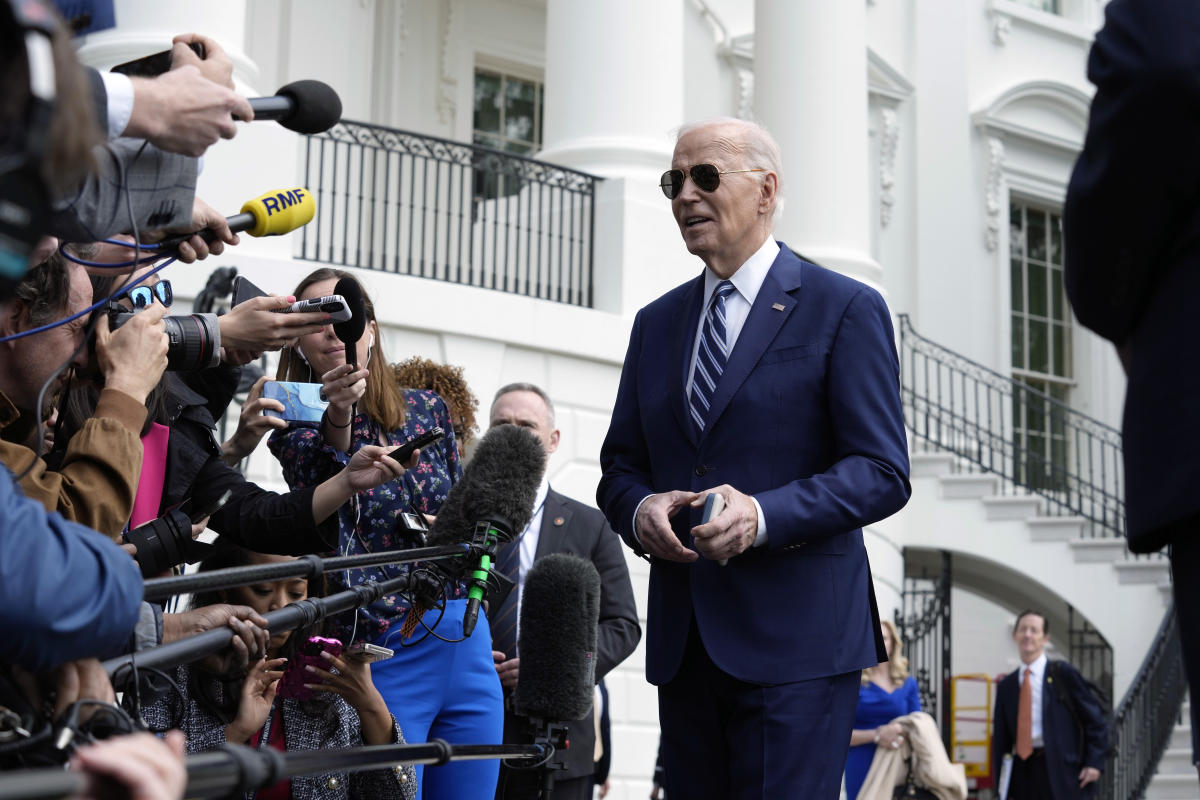President Joe Biden vowed last week that he would take another stab at trying to pass border security legislation that had been axed during negotiations over his foreign aid package.
It was news to those involved in the first round of negotiations over the bill.
Talks around resuscitating the bipartisan border compromise that senators struck in February have been nonexistent in Washington. And despite the president’s proclamation, administration officials and immigration policy experts both say it’s highly unlikely any legislative momentum for border security materializes between now and November.
“They pulled a rabbit out of a hat on Ukraine, but there’s no chance they’re getting anything out of Mike Johnson’s House on border security,” said an immigration advocate familiar with the White House’s thinking, granted anonymity to discuss private conversations with administration officials. “They’ve known that since December, when they realized they had to count votes in the House. There’s no chance of legislation on this, and they know that. It’s rhetorical posturing.”
Biden’s comments last week underscored the administration’s desire to try and turn the politics of the border — long an albatross for Democrats — into something more advantageous. After former President Donald Trump and Republican lawmakers tanked the compromise bill, the White House moved to put blame for the crisis at their feet. The president has openly weighed the possibility of taking executive action and, as he did upon signing the foreign aid bill, talked up the need to revisit the legislation.
“I proposed and negotiated and agreed to the strongest border security bill this country has ever, ever, ever seen,” he said last week, speaking about its exclusion from the foreign aid package. “It was bipartisan. It should have been included in this bill, and I’m determined to get it done for the American people.”
But, in reality, there’s been no behind-the-scenes jockeying from the White House to restart talks, in part because the White House believes that the migration crisis has temporarily stabilized, with illegal border crossings dipping again in March to 137,000.
While talks may be currently dormant, that doesn’t mean they can’t or won’t be restarted. Senate Majority Leader Chuck Schumer has a number of moderate members of his party up for reelection this year, some of whom are pushing for him to bring the bill to the floor again.
“We’re not leaving border alone, we’re going to come back to it,” Schumer said in an interview this week, echoing the president.
But another attempt at action in the Senate would run into the same hurdles as last time: Trump’s opposition and dim prospects in a Republican-run House.
“My colleagues said it wasn’t good enough. And then, our nominee for president said: I don’t want you to do anything because this is my best issue going into November,” Senate Minority Leader Mitch McConnell lamented last week.
That outlook, in turn, has left the White House weighing new executive actions, including restrictions on asylum. Administration officials have held a number of meetings on the new policies this week, spurring chatter that the announcements could be coming soon. But five people close to the administration, who were granted anonymity to discuss private conversations with administration officials, say the timeline remains murky. The White House is weighing both the political optics of moving forward unilaterally and questions about whether some of the actions it takes would pass legal muster.
“I think everything is in pencil,” said a former administration official. “Nothing is in Sharpie.”
The administration has been crafting an executive action that would include using a section of the Immigration and Nationality Act to bar migrants from seeking asylum in between U.S. ports of entry. Like the border legislation, the directive would likely be tied to a trigger, coming into effect after a certain number of illegal crossings took place, said the five people close to the administration. The order would also make it more difficult for migrants to pass the initial screening for seeking asylum, as well as ways to quickly deport those who don’t meet those elevated asylum standards.
Border crossings dropped by 50 percent in January and have since remained stable, creating a belief among administration officials that the president has more space to deal with the issue. Increased enforcement on the Mexican side of the border, which began after Biden administration officials traveled to meet with counterparts in December, has helped alleviate some of the political pressure in the U.S.
While it has been reported that the White House would make the moves by late April, it’s still expected that the administration will roll out the new policies when border numbers rise again.
“Because otherwise, it would be like a tree falling in the forest with no one to hear it,” said another advocate familiar with the White House’s thinking. “Unless something’s happening at the border, people don’t pay as much attention.”
In addition to combating political pressure on the right, some Democrats have also expressed concerns that Biden hasn’t done enough to draw contrast with Trump on the immigration issue. New polls have shown that voters prefer a balanced approach to the border — a mix of border security measures and actions that protect Dreamers and other immigrants who have been in the United States for an extended period of time. Along those lines, administration officials are discussing potential actions they can take for undocumented people who have long resided in the United States. One idea that has been floated among administration officials is opening access to the cancellation of removal program for people who have lived in the U.S. for over 10 years and have citizen or resident relatives who would “suffer” if they were deported. But the biggest debate is around whether or not Biden should provide temporary legal status and work permits to undocumented immigrants in the U.S. who are married to American citizens, an estimated 1.1 million people.
Immigration groups have been pushing the White House on this move, suggesting it could energize Democrats ahead of the November election, like former President Barack Obama’s Deferred Action for Childhood Arrivals program did in June 2012. But there are also concerns among some administration officials that it could spur more political blowback on an already vexing issue for the president, particularly if border numbers creep up again.
“That’s where the conversation is probably being had most thoroughly is, ‘OK, is there a political consequence to this, or should we wait for a second term?’” said a former administration official. “It’s not like this idea has an expiration date. He could do this or look at it in the future, where the political space might be greater.”
Burgess Everett contributed to this report.

Amanda Smith is a dedicated U.S. correspondent with a passion for uncovering the stories that shape the nation. With a background in political science, she provides in-depth analysis and insightful commentary on domestic affairs, ensuring readers are well-informed about the latest developments across the United States.







